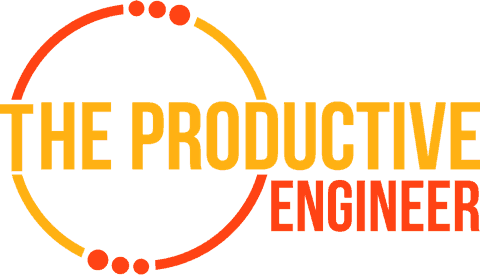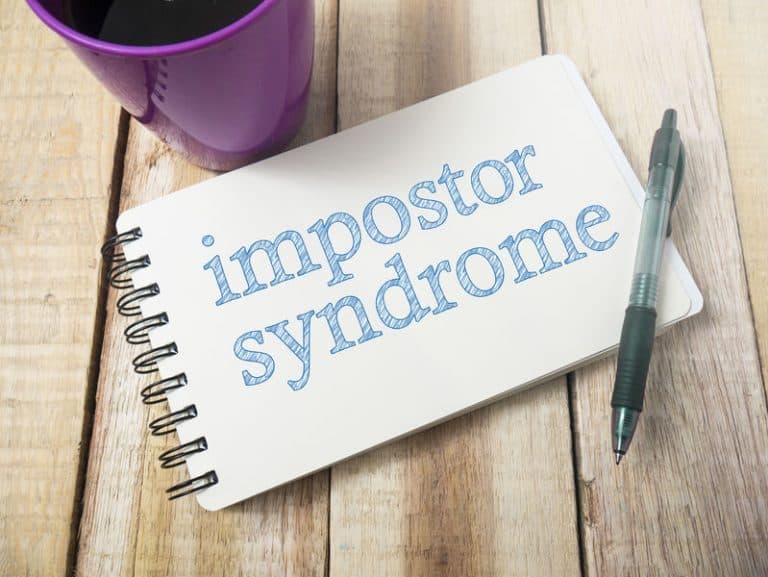Mastering the Art of Learning: A Comprehensive Guide to Using Flashcards Effectively
Hey there, fellow learners! Have you ever wondered why flashcards are such a staple in studying? Whether you’re a high school student cramming for exams, a college student tackling complex subjects, or just a curious mind eager to learn, flashcards can be your best friend. Today, we’re diving deep into the world of flashcards. Let’s unlock the secrets to making flashcards your most powerful learning tool!
Understanding Flashcards
Flashcards, in their simplest form, are small note cards used for testing and improving memory through practiced information retrieval. They’re incredibly versatile and suitable for learners of all ages and stages. But what makes them so effective? Let’s find out.
The Purpose and Value of Flashcards: Insights from Expert Sources
Flashcards, a time-tested tool in the educational arsenal, serve a multifaceted purpose in the learning process. Let’s explore the inherent value and purpose of using flashcards in your study routine.
1. Enhancing Active Recall: Central to the value of flashcards is their ability to promote active recall. As highlighted by Central Penn College, this process involves actively stimulating memory during learning. By forcing your brain to retrieve information from memory, flashcards help create stronger neural connections, making the information more memorable and accessible.
2. Building Lasting Memory Connections: Flashcards aren’t just short-term memorization and long-term retention. Twinkl Teaching Wiki emphasizes the role of flashcards in imprinting information into short- and long-term memory. This is particularly effective when combined with spaced repetition, a strategy for reviewing information at increasing intervals.
3. Personalizing the Learning Experience: The act of creating your flashcards, as suggested by College Info Geek, is a learning process in itself. When you translate information into your own words and format, it enhances understanding and retention. This personal touch makes the material more relatable and caters to individual learning styles.
4. Incorporating Visual Aids: The integration of images and words on flashcards, a technique underscored by College Info Geek, taps into the Picture Superiority Effect. This principle suggests that images are more easily and frequently recalled than words, making flashcards an excellent tool for visual learners.
5. Facilitating Complex Learning: Flashcards can break down complex concepts into manageable chunks. By dividing a larger topic into several more straightforward questions, as recommended by College Info Geek, learners can tackle intricate subjects without feeling overwhelmed. This step-by-step approach ensures a thorough understanding of each component before progressing.
6. Versatility in Learning: The adaptability of flashcards makes them suitable for a wide range of subjects and learning scenarios. Flashcards can be customized to fit any learning need, whether it’s language vocabulary, scientific formulas, or historical dates, as illustrated by the diverse examples from Twinkl Teaching Wiki.
7. Engaging Multiple Learning Styles: Flashcards cater to various learning styles – visual, auditory, and kinesthetic. As Central Penn College points out, involving multiple senses in the study process, such as reading aloud or handling physical cards, can significantly enhance the learning experience.
In conclusion, flashcards offer a unique blend of active recall, personalized learning, visual aids, and versatility, making them invaluable in pursuing knowledge. Whether used alone or with other study methods, flashcards can transform how we absorb, retain, and recall information, paving the way for a more effective and engaging learning journey.
The Science Behind Flashcards
At the heart of flashcards’ effectiveness is cognitive science. Strategies like spaced learning, interleaving, and retrieval practice play a crucial role. Spaced learning, based on Ebbinghaus’s ‘Forgetting Curve,’ involves revisiting information over increasing intervals. Interleaving mixes different but related topics, enhancing your ability to differentiate and understand concepts. Retrieval practice, meanwhile, strengthens memory and learning by recalling information.
Flashcards are more than just simple study aids; they are grounded in cognitive science principles that enhance learning and memory retention. Enclosed below is a list of scientifically proven benefits provided by the use of flashcards:
1. Active Recall: This process involves actively stimulating the brain to retrieve information, which strengthens neural pathways and aids in long-term memory retention. By using flashcards, learners are not just passively reviewing material; they are actively engaging their memory, which is a more effective way to learn and remember information.
2. Spaced Repetition and the Forgetting Curve: Twinkl Teaching Wiki discusses spaced repetition based on Ebbinghaus’s Forgetting Curve. This theory suggests that our ability to retain information diminishes over time unless the information is actively reviewed. Flashcards are ideal for implementing spaced repetition, allowing learners to review material at increasing intervals effectively embedding the information into long-term memory.
3. Interleaving: Interleaving involves mixing up the study of different but related topics. This approach helps form connections between different pieces of information and improves problem-solving skills. Flashcards can be used to facilitate interleaving by creating sets that cover various related topics or concepts.
4. Beyond Rote Memorization: Flashcards, when used correctly, can go beyond mere memorization to deepen understanding of concepts. This involves creating flashcards that ask for definitions and encourage learners to apply concepts in different contexts.
5. Self-Testing and Identifying Weaknesses: The Learning Scientists noted that flashcards are an excellent tool for self-testing. This practice not only helps in memorizing information but also in identifying areas where the learner has weaknesses. By regularly testing themselves with flashcards, learners can focus their study efforts on areas that need more attention, leading to more efficient and effective learning.
Conclusion: The science behind flashcards lies in their ability to engage cognitive processes such as active recall, spaced repetition, and interleaving, as well as their utility in self-testing and deepening conceptual understanding. These principles explain why flashcards are such a powerful learning and memory retention tool. By leveraging these scientific strategies, learners can maximize the effectiveness of flashcards in their study routines.
Creating Effective Flashcards
Creating your flashcards isn’t just a task; it’s part of the learning process. You already engage with the material when you write down questions and answers. But don’t just stop at words; mix in some visuals! The Picture Superiority Effect shows that images are often more memorable than words alone. And don’t forget mnemonic devices – they’re like secret codes that unlock your memory.
Handwritten vs. Digital Flashcards: A Comparative Analysis
Flashcards have long been a staple in the toolkit of learners, but with the advent of digital technology, there’s a new dimension to consider: handwritten versus digital flashcards. Each method has unique advantages and drawbacks, as highlighted in the articles from Microsoft 365, College Info Geek, Central Penn College, and others.
Handwritten vs Digital Flashcard Comparison Table:
| Aspect | Handwritten Flashcards | Digital Flashcards |
|---|---|---|
| Creation Process | – Involves physical writing, which can aid in memory retention. Can be more time-consuming. | – Quick and easy to create and edit. Can include multimedia elements like audio and video. |
| Personalization | – High level of personalization through handwriting, drawing, and color-coding. | – Customizable templates and digital tools for organization. |
| Portability | – Physically tangible but can be bulky to carry in large quantities. | – Highly portable as they can be accessed on various digital devices. |
| Engagement | – The act of writing can enhance engagement and active recall. | – Interactive features like quizzes and spaced repetition algorithms. |
| Accessibility | – Requires physical materials like cards and pens. | – Easily accessible on smartphones, tablets, or computers. |
| Eco-Friendly | – Uses paper, which may not be environmentally friendly. | – More eco-friendly with no physical materials required. |
| Cost | – Generally low-cost, but can add up with the need for materials. | – May involve costs for apps or software, though many free options exist. |
Conclusion
Handwritten flashcards offer the tactile experience and the memory-boosting benefits of the physical writing process, making them ideal for learners who thrive on active engagement and personalization. On the other hand, digital flashcards provide the convenience of portability, accessibility, and advanced features like multimedia integration and algorithm-based learning aids. The choice between handwritten and digital flashcards ultimately depends on individual learning preferences, study habits, and the specific requirements of the material being studied. Both methods have their place in a well-rounded study strategy, and many learners may find combining both the most effective approach.
Advanced Techniques for Flashcard Use
Flashcards aren’t just about memorizing facts; they’re about understanding concepts. Break complex ideas into bite-sized questions. This makes studying manageable and ensures you grasp each part of the concept. And here’s a pro tip: say your answers aloud and study your flashcards in both directions. This reinforces learning and ensures you’re recognizing and recalling information.
Enclosed below is a list of advanced techniques for using flashcards, each accompanied by a description:
- Spaced Repetition:
- Description: This technique involves reviewing flashcards at systematically increasing intervals. It’s based on the psychological principle that the more often you come across information, the less frequently you need to review it to remember it. Tools like digital flashcard apps often have built-in algorithms to help with this.
- Leitner System:
- Description: A method where flashcards are sorted into groups based on how well you know each one. Cards you’re less familiar with are reviewed more frequently, while those you know well are reviewed less often. This system ensures focused attention on weaker areas.
- Interleaving:
- Description: This involves mixing different topics or subjects within a single study session. Instead of studying one type of problem or topic at a time, you shuffle different categories together. This approach helps in building connections between ideas and improves problem-solving skills.
- Self-Explanation:
- Description: After answering a flashcard, take a moment to explain why the answer is correct. This technique helps deepen your understanding of the material and ensures that you’re not just memorizing facts but also comprehending them.
- Dual Coding:
- Description: Combine verbal and visual information on your flashcards. For example, include a graph or a chart along with a textual explanation. This method leverages the brain’s ability to process and remember visual information alongside text.
- Meta-Cognitive Reflection:
- Description: After each study session, reflect on what you’ve learned and what was challenging. This reflection helps in adjusting your study strategies and flashcard content to better suit your learning needs.
- Active Recall Testing:
- Description: Regularly test yourself with your flashcards without looking at the answers first. This practice strengthens memory and enhances the ability to recall information during exams.
- Concept and Instruction Cards:
- Description: Create two sets of flashcards: one for key concepts (with the concept name on one side and its definition or explanation on the other) and another for instructions or questions that prompt you to apply these concepts in different ways.
- Storytelling Method:
- Description: Use flashcards to build a story or a logical sequence. This is particularly effective for subjects like history or language learning, where understanding the sequence of events or ideas is crucial.
- Mnemonic Devices:
- Description: Incorporate mnemonic devices on flashcards to aid memory. These can be acronyms, rhymes, or associations that help in recalling complex information.
By incorporating these advanced techniques into your flashcard study sessions, you can significantly enhance the effectiveness of your learning and memory retention.
Engaging with Flashcards
Who said studying can’t be fun? Use colored cards, create games, or study with friends to make flashcards more engaging. Engaging multiple senses – like touch, sight, and hearing – can also enhance memory. In a classroom setting, flashcards can transform into a dynamic learning activity, fostering collaboration and interactive learning.
To help you get started using flashcards, enclosed below is a free flashcard tips infographic you can download:
Limitations and Best Practices
Flashcards are fantastic, but they’re not a one-size-fits-all solution. They work best for drilling relationships between two pieces of information. Remember, they’re just one tool in your study arsenal. Combine them with methods like writing explanations, quizzes, and mind maps for a well-rounded study routine.
Best Practices for Using Flashcards Effectively
To maximize the benefits of flashcards in your study routine, it’s important to follow some best practices. These guidelines can help ensure that flashcards are not just a tool for memorization, but a means to deeper understanding and effective learning.
- Quality Over Quantity:
- Focus on creating meaningful and concise flashcards. Overloading cards with too much information can be counterproductive. Keep them clear and to the point.
- Personalize Your Flashcards:
- Create flashcards in your own words to better understand and remember the concepts. Personalization makes the learning process more engaging and effective.
- Incorporate Visual Elements:
- Use diagrams, colors, or symbols to make flashcards visually stimulating. This can be particularly helpful for visual learners and for memorizing complex information.
- Regular Review and Spaced Repetition:
- Review flashcards regularly and employ spaced repetition techniques. Gradually increase the intervals between reviews to enhance long-term retention.
- Test Both Ways:
- Practice with flashcards by looking at both the question side and the answer side. This ensures a deeper understanding and recall of the information.
- Categorize and Organize:
- Organize flashcards into categories or topics. This helps in structuring your study sessions and focusing on specific areas of study.
- Use Mnemonic Devices:
- Incorporate mnemonic devices to make memorization easier. These can be acronyms, rhymes, or associations that help in recalling information.
- Embrace Active Learning:
- Actively engage with the flashcards. Read them out loud, write down the answers, or explain the concept to someone else to reinforce learning.
- Update and Refine:
- Regularly update your flashcards. Remove or modify cards as your understanding of the topic evolves or as you master certain concepts.
- Combine with Other Study Methods:
- Use flashcards as part of a broader study strategy. Complement them with other learning methods like note-taking, mind mapping, and group discussions.
- Set Realistic Goals:
- Set achievable goals for each study session. For instance, aim to go through a certain number of flashcards or master a specific topic.
- Review Mistakes:
- Pay special attention to flashcards you often get wrong. Spend more time understanding these concepts to overcome learning gaps.
- Stay Consistent:
- Consistency is key. Make flashcard review a regular part of your study routine to reap the maximum benefits.
- Use Technology Wisely:
- If using digital flashcards, take advantage of features like multimedia content, spaced repetition algorithms, and progress tracking.
Understanding the Limitations of Flashcards
While flashcards are a popular and effective tool for studying, it’s important to recognize their limitations. Understanding these constraints can help learners use flashcards more effectively and complement them with other study methods.
- Surface Learning:
- Flashcards are often criticized for promoting rote memorization rather than deep understanding. They are excellent for memorizing facts, definitions, and formulas, but they may not be as effective for complex concepts that require in-depth understanding and critical thinking.
- Contextual Learning:
- Flashcards can sometimes isolate information from its broader context. Learning facts in isolation might hinder the ability to apply this knowledge in a real-world or exam scenario where understanding the interconnections between different pieces of information is crucial.
- Over-Reliance:
- Relying solely on flashcards can lead to gaps in knowledge. They should be used as part of a broader study strategy that includes other methods like reading comprehensive texts, engaging in discussions, and applying knowledge in practical situations.
- Time-Consuming Creation:
- Creating effective flashcards, especially handwritten ones, can be time-consuming. This might not be the most efficient use of time, particularly for subjects that require understanding of large concepts rather than memorization of discrete facts.
- False Sense of Mastery:
- Repeatedly reviewing flashcards can lead to a false sense of mastery, where the learner recognizes the information on the cards but may not be able to recall or apply it independently in a different context.
- Physical Limitations:
- For those using physical flashcards, there can be practical limitations in terms of portability and organization, especially when dealing with a large volume of cards.
- Learning Styles:
- Flashcards may not be equally effective for all learning styles. While they are great for visual and solitary learners, they might not be as beneficial for those who prefer auditory or kinesthetic learning methods.
Practical Applications and Examples
Flashcards can be tailored for almost any subject, from language vocabulary to historical dates. For instance, in language learning, they can be used for vocabulary and grammar rules, while in science, they can help memorize formulas and concepts. The key is to adapt them to your study needs.
Sources
| Source | URL |
|---|---|
| College Info Geek | https://collegeinfogeek.com/flash-card-study-tips/ |
| Central Penn College’s Learning Center | https://guides.centralpenn.edu/c.php?g=695569&p=4999857 |
| Twinkl Teaching Wiki | https://www.twinkl.com/teaching-wiki/flashcards |







